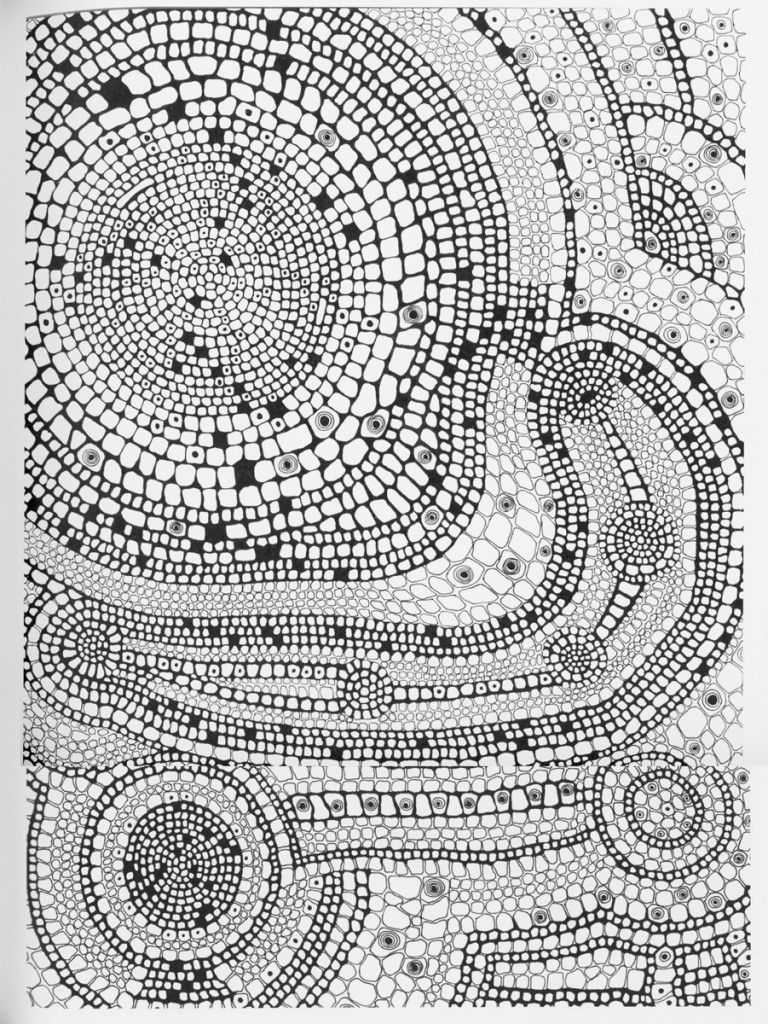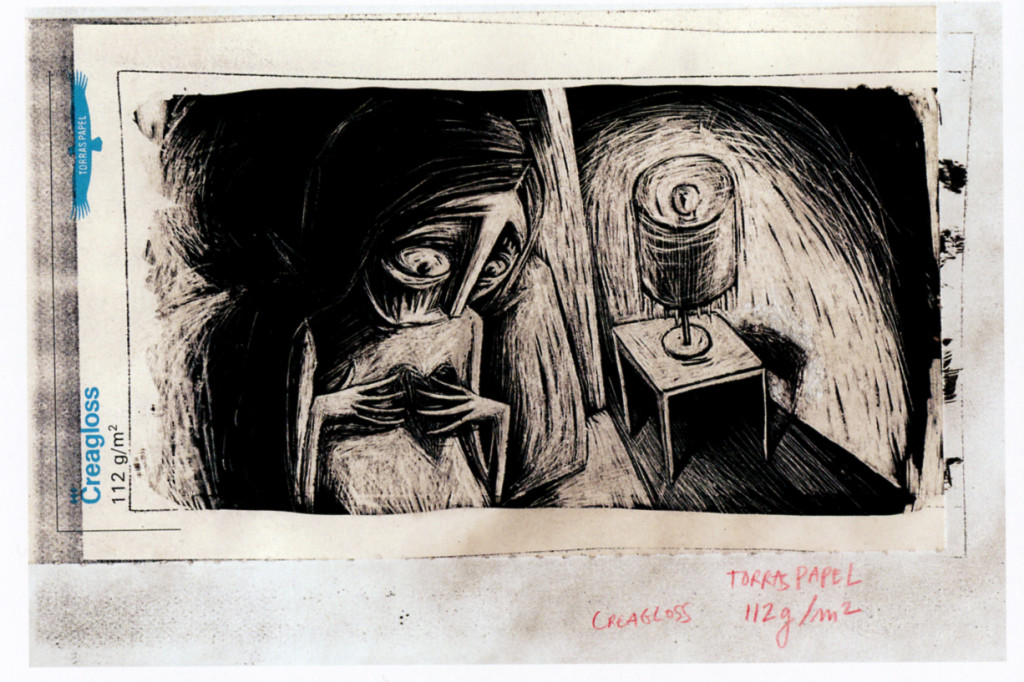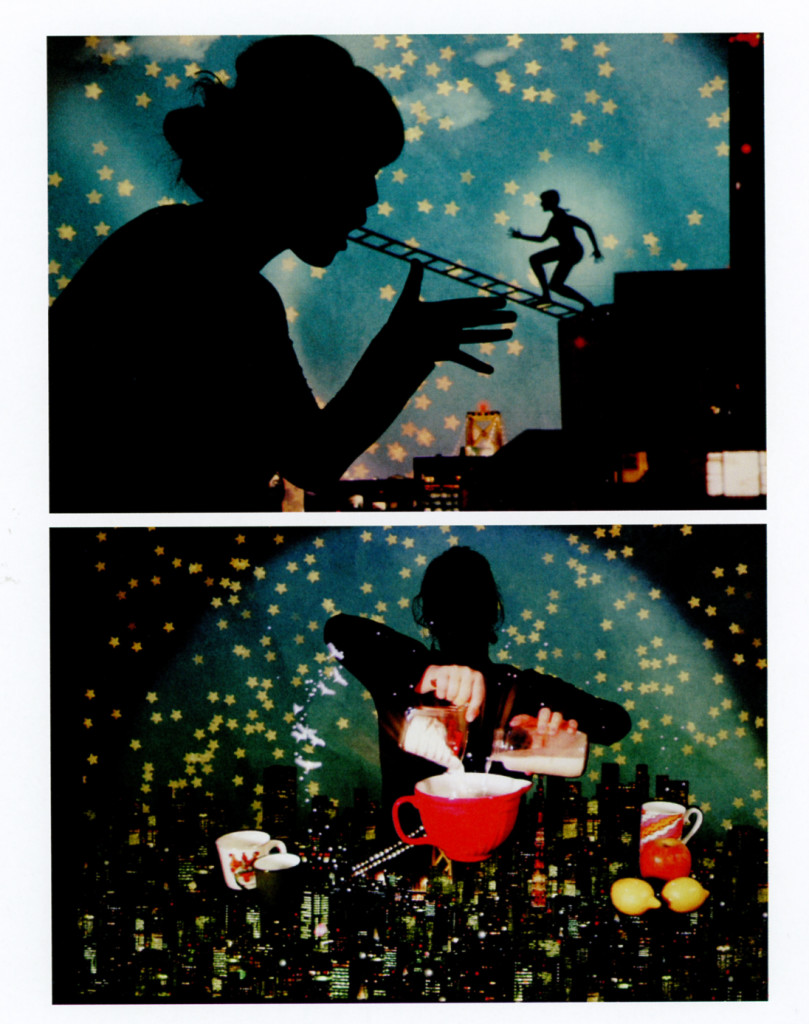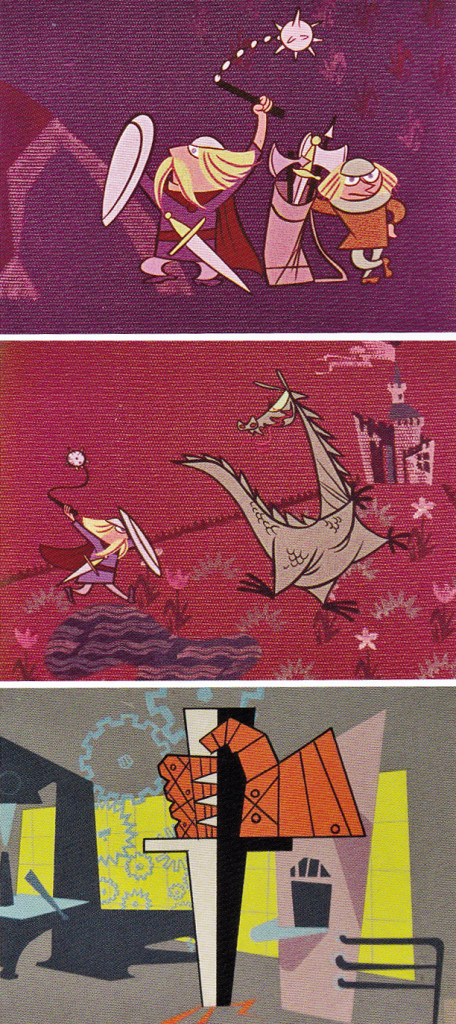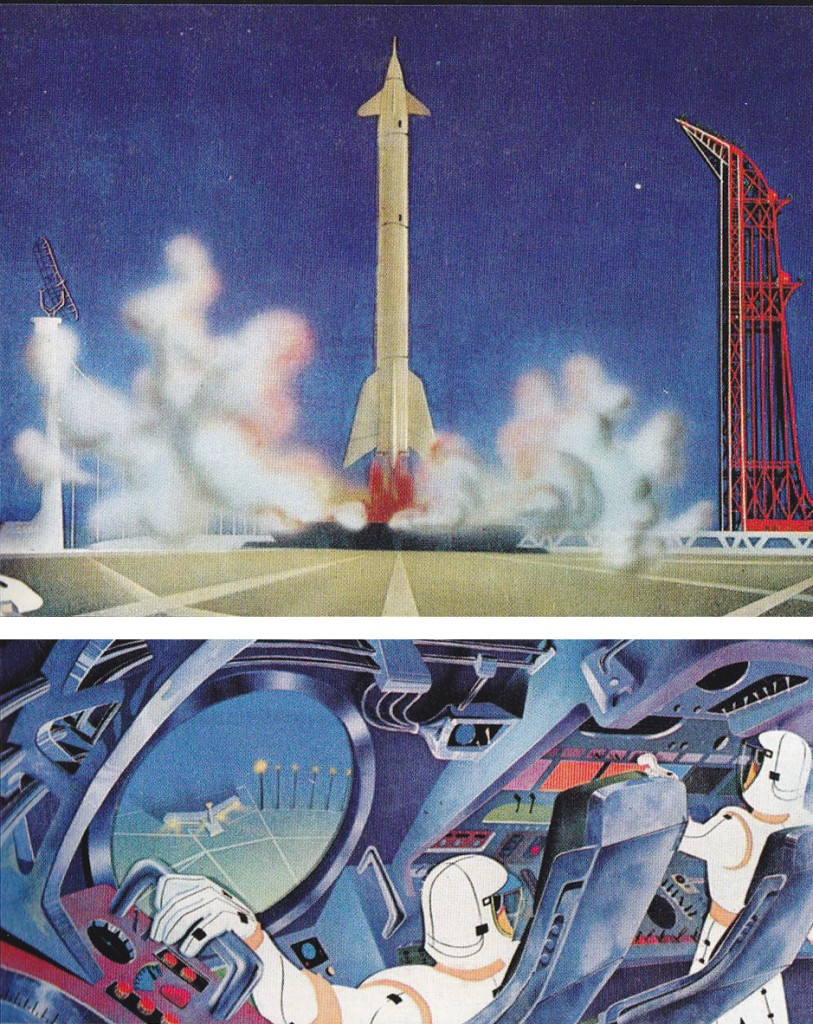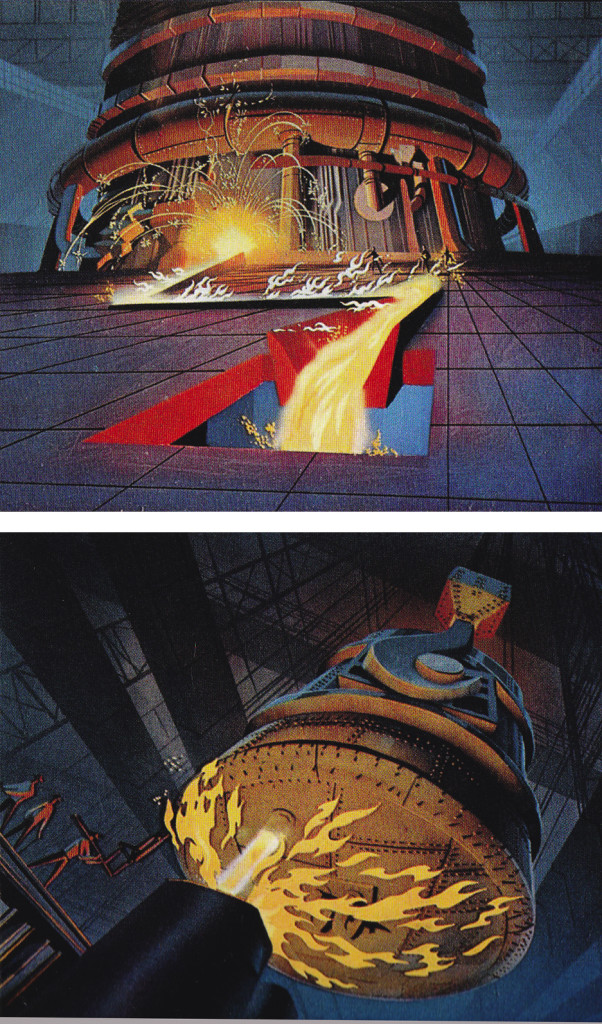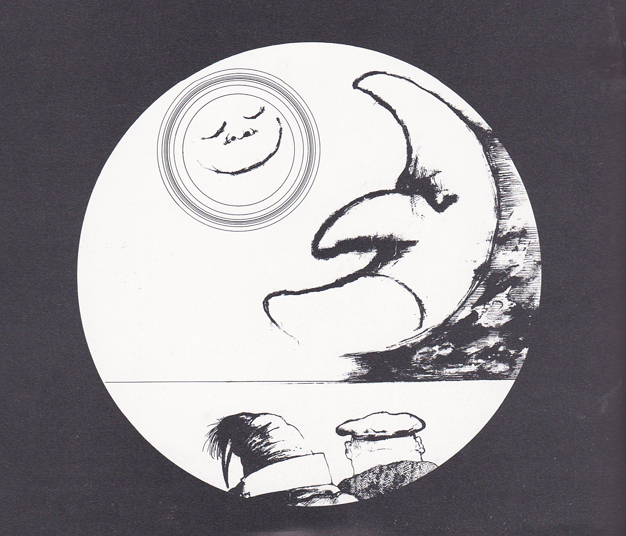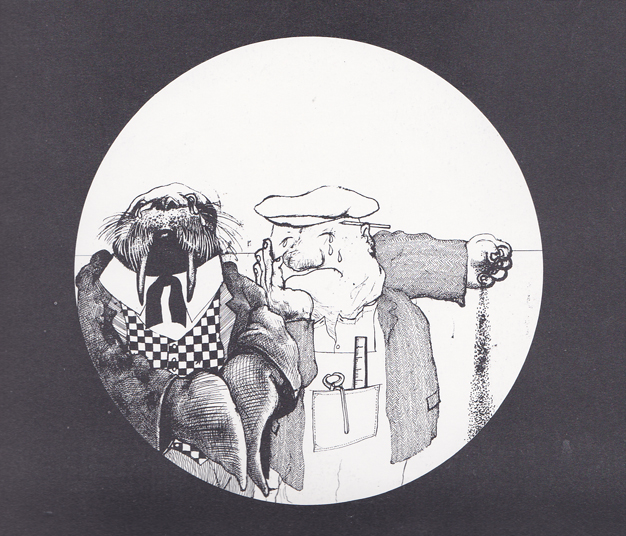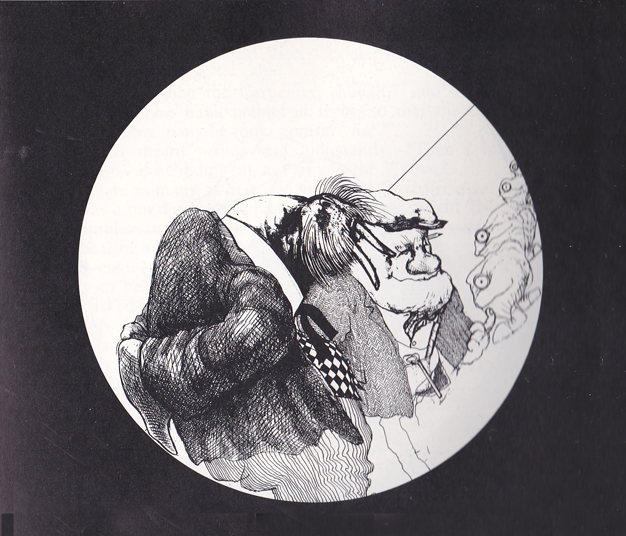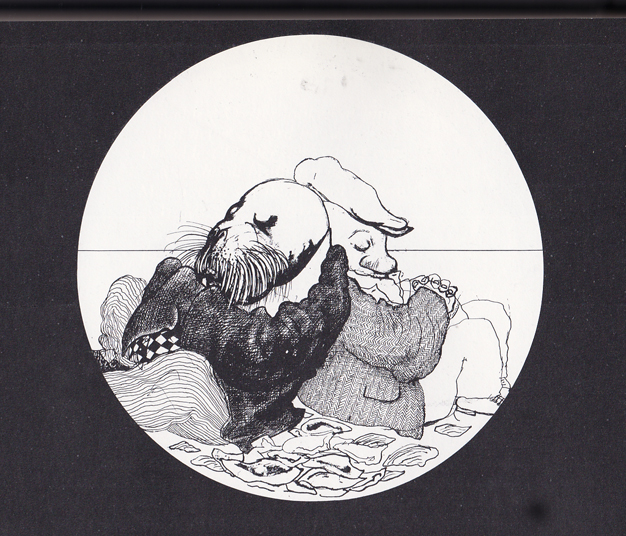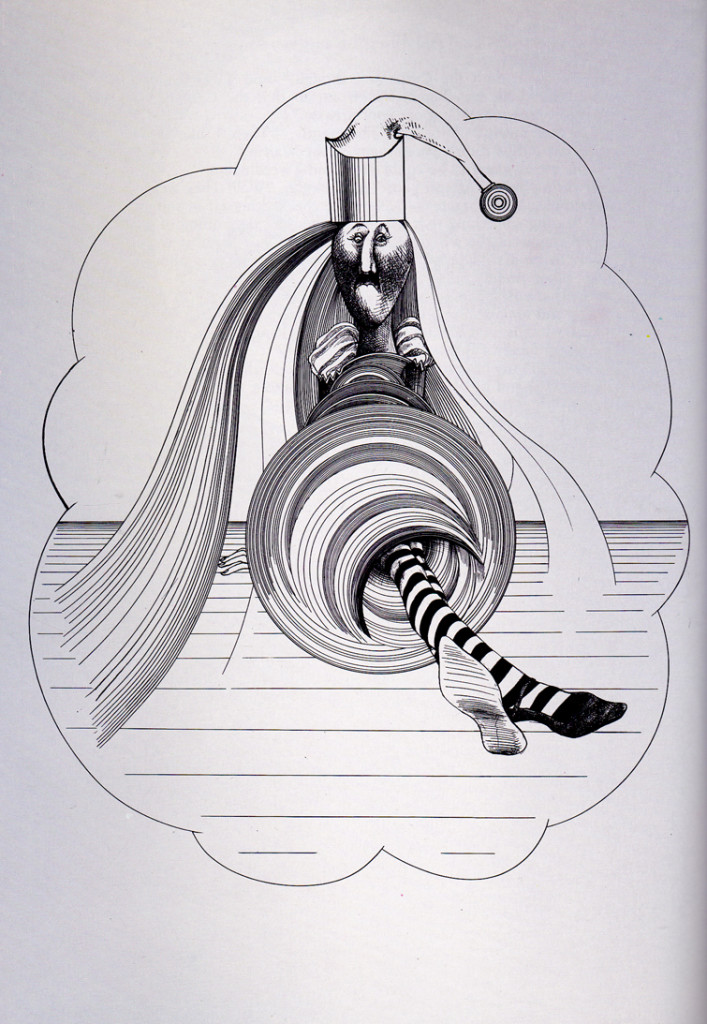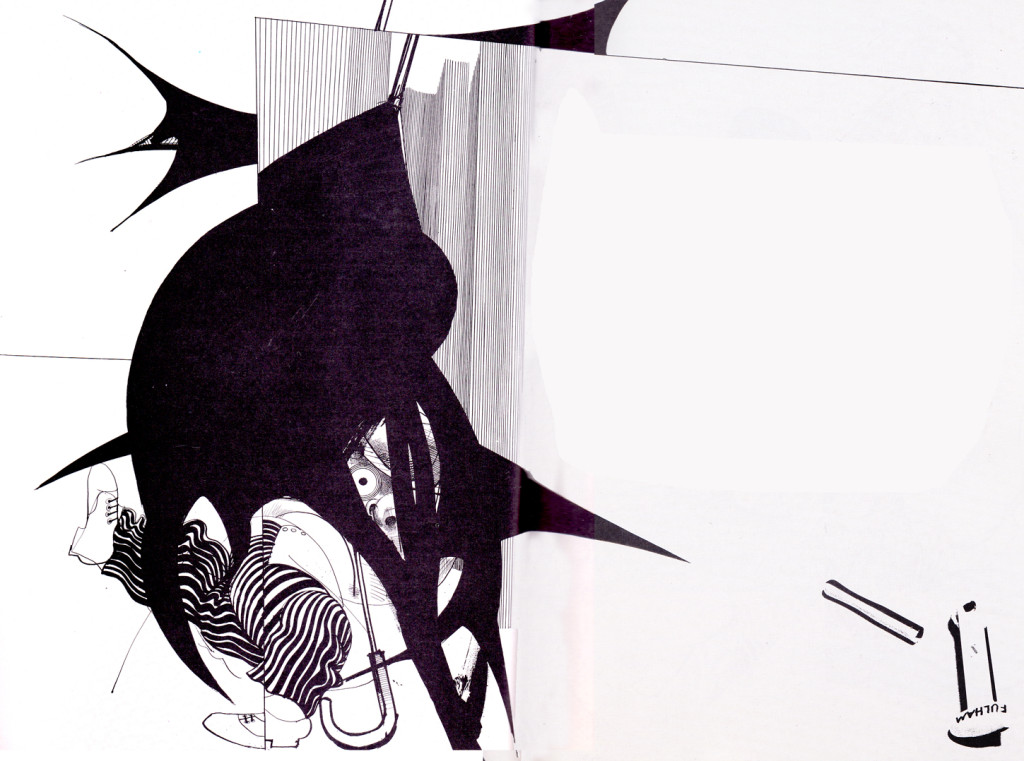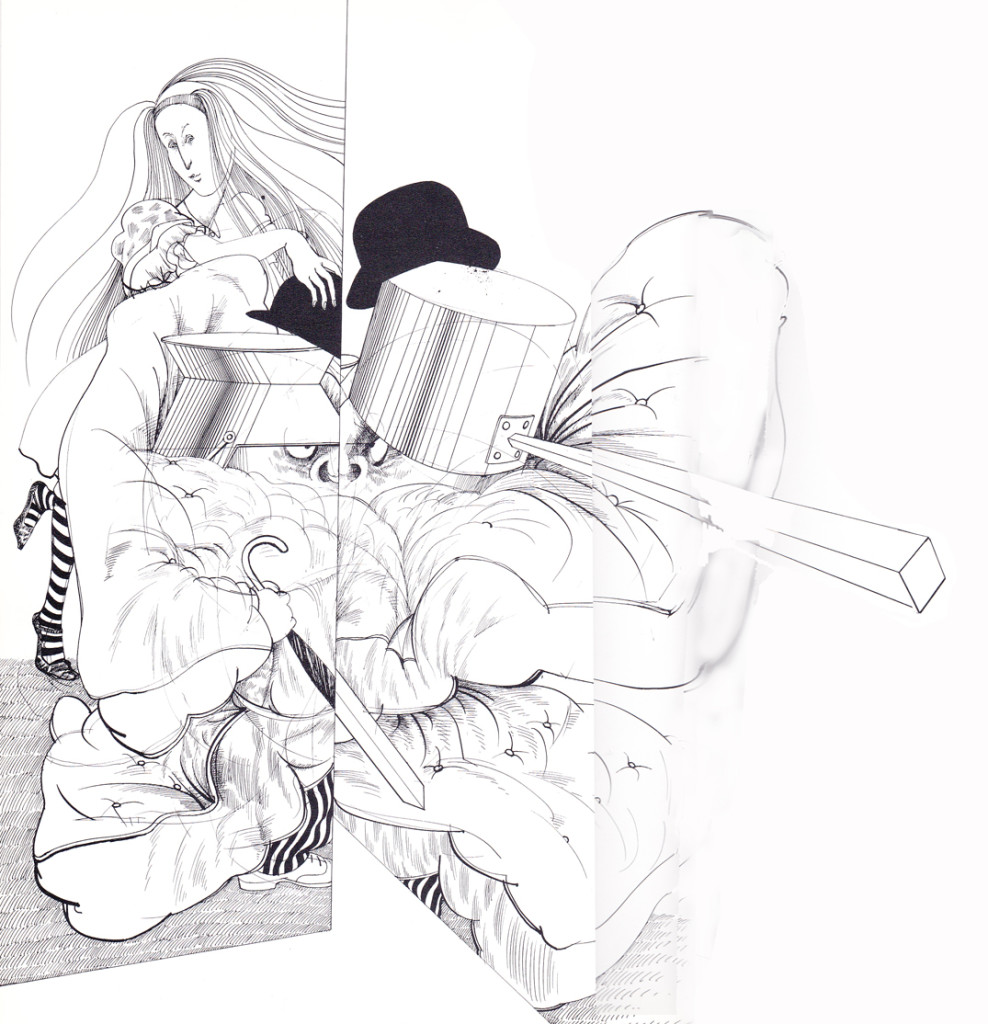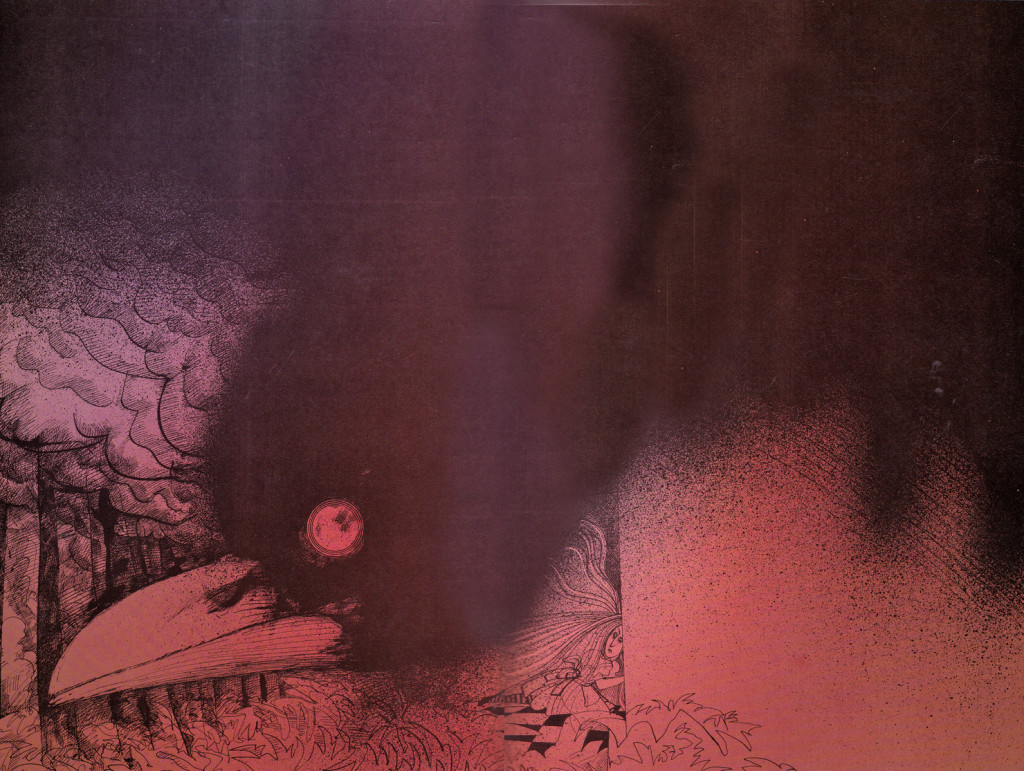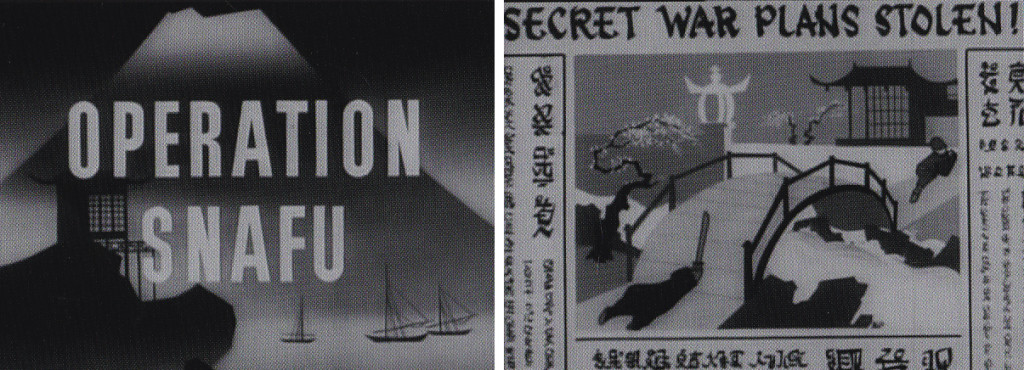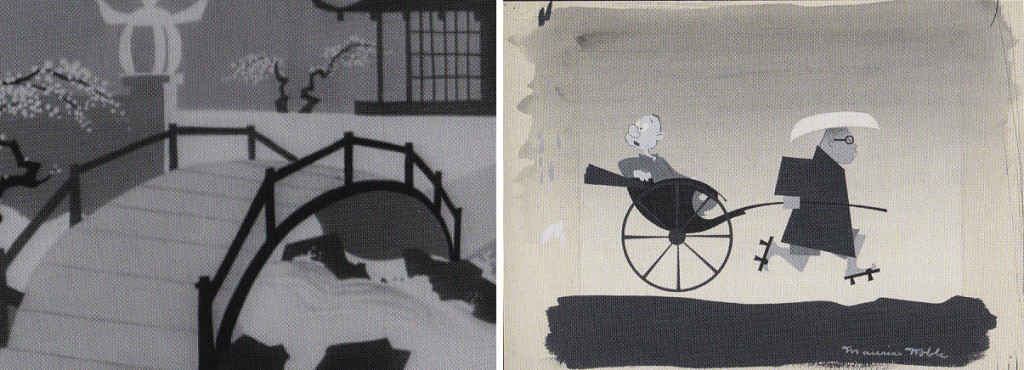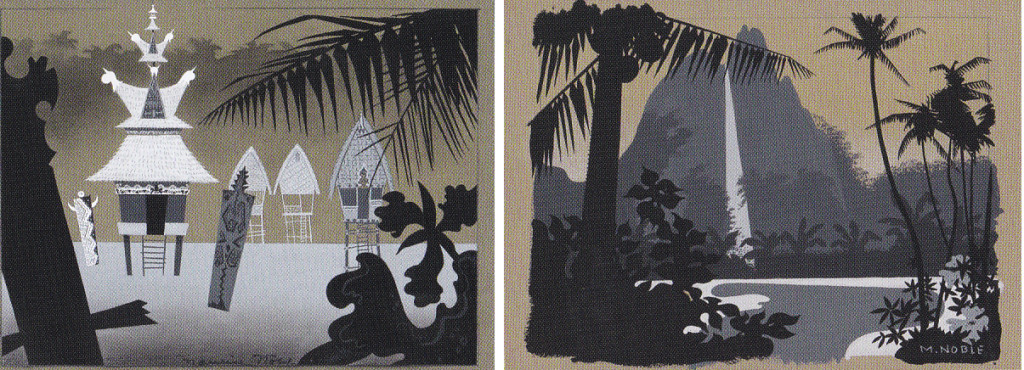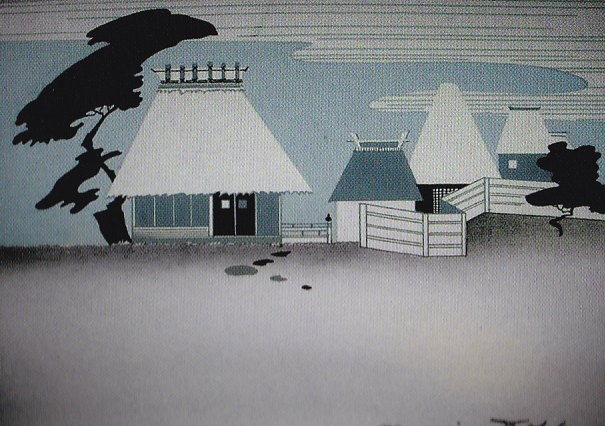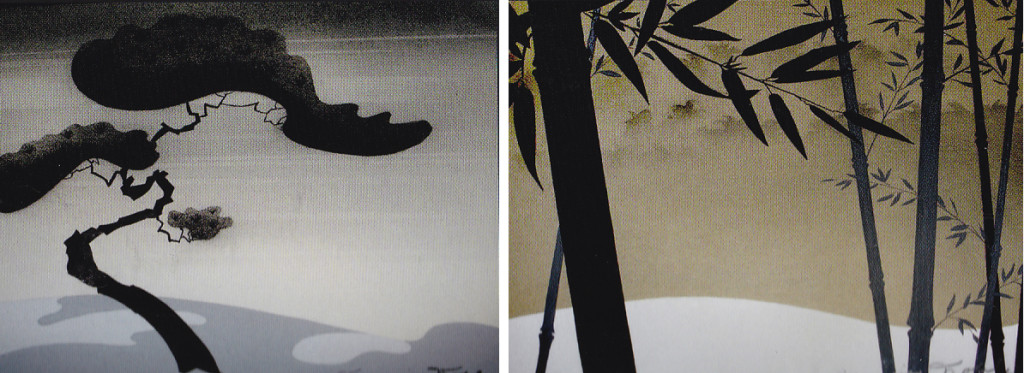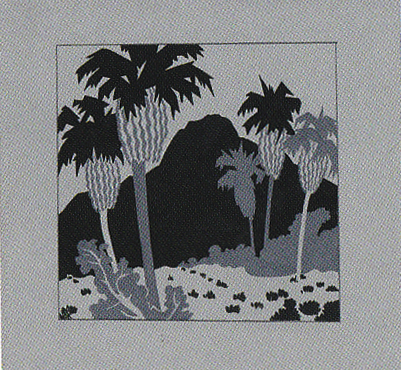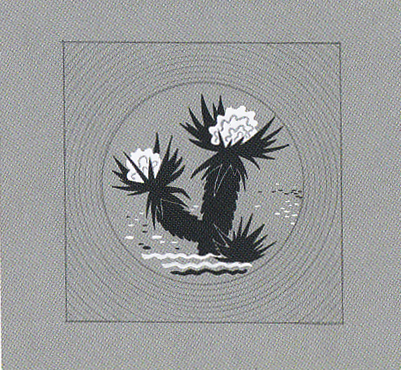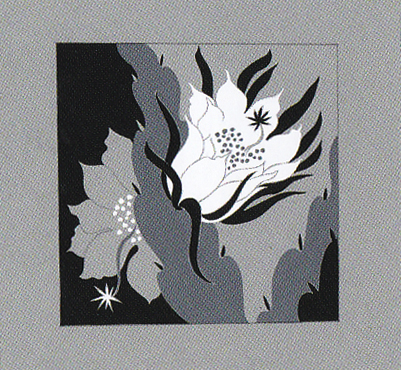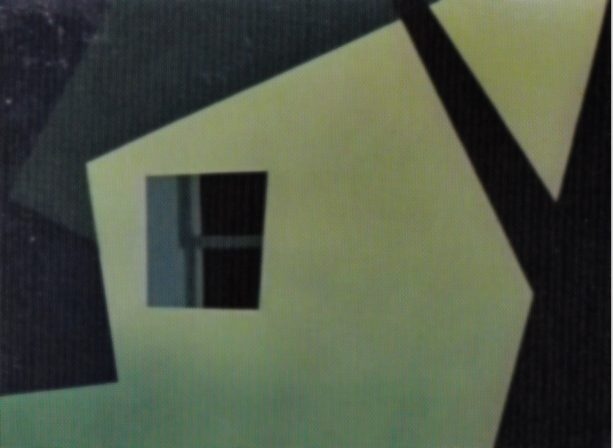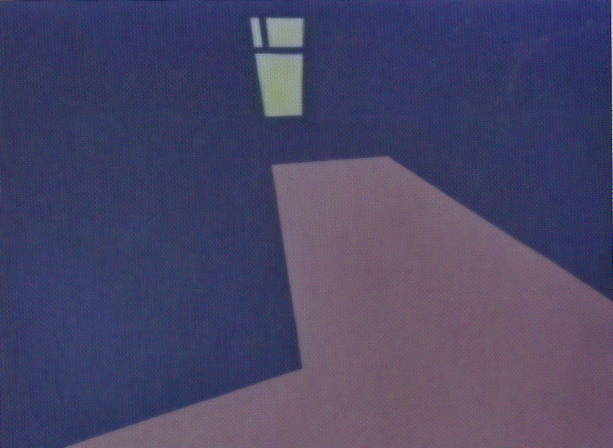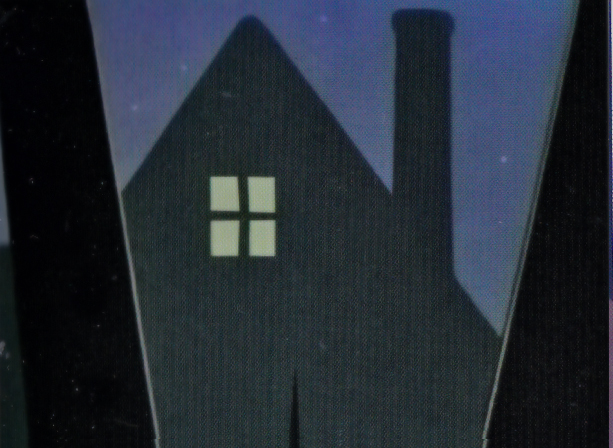Monthly ArchiveSeptember 2013
Daily post 30 Sep 2013 06:55 am
Tie Me Down w.a bit o’ Aimation History
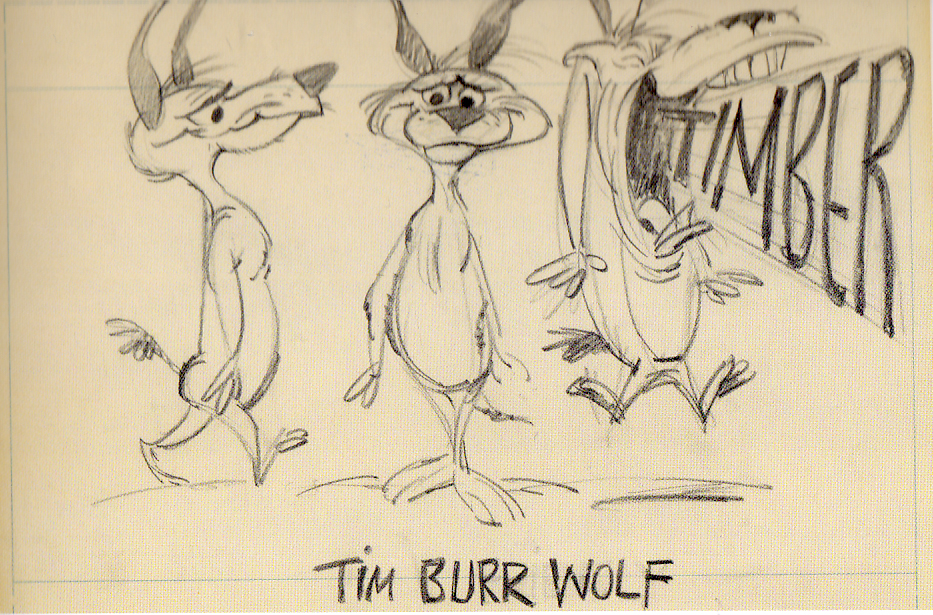 I’d estimate that roughly 1/3 of the book, Noble Approach, is dedicated to the Warner’s; work of Maurice Noble as well as the time spent working on again / off again with Chuck Jones. The rest of the book sits with the continued history of Noble: his work with John Sutherland, Tower 12 and MGM. There’s also a good amount of time devoted to how he breaks his day up and how he gets the most of is time. It’s a curious book and is totally dedicated to the artwork of the man and how we can learn from him.
I’d estimate that roughly 1/3 of the book, Noble Approach, is dedicated to the Warner’s; work of Maurice Noble as well as the time spent working on again / off again with Chuck Jones. The rest of the book sits with the continued history of Noble: his work with John Sutherland, Tower 12 and MGM. There’s also a good amount of time devoted to how he breaks his day up and how he gets the most of is time. It’s a curious book and is totally dedicated to the artwork of the man and how we can learn from him.
It’s a beautiful book full of excellent images, and well worth the purchasing price. Tod Polson knows and works in the business and brings us Maurice’s approach to that production. It’s a very good book, in my opinion. I could have asked for more dirt about the heavyweight films, but I’m satisfied to have what it there.
There’s another good book, Stepping into the Picture: Cartoon Designer Maurice Noble which gives you a somewhat similar approach but with far fewer color images. Personally, I’d buy both – which I have done, if you’re a fan in any way at all.
This review, of course, concerns the most recent book, THe Noble Approach. A lot of attention is given to the hit parade of films: What’s Opera Doc?, Daffy Duck in the 24½ Century, Duck Amuck and a number of the Road Runners, among others. These are all beautiful animation artifacts and have animation and sound tracks every bit as good as the design which is placed on display, here. Animation done today does not get the same kind of attention, and all we can do is weep about it and put more of ourselves into the films we’re making.
Daily post 30 Sep 2013 12:32 am
Meet Cute and then some
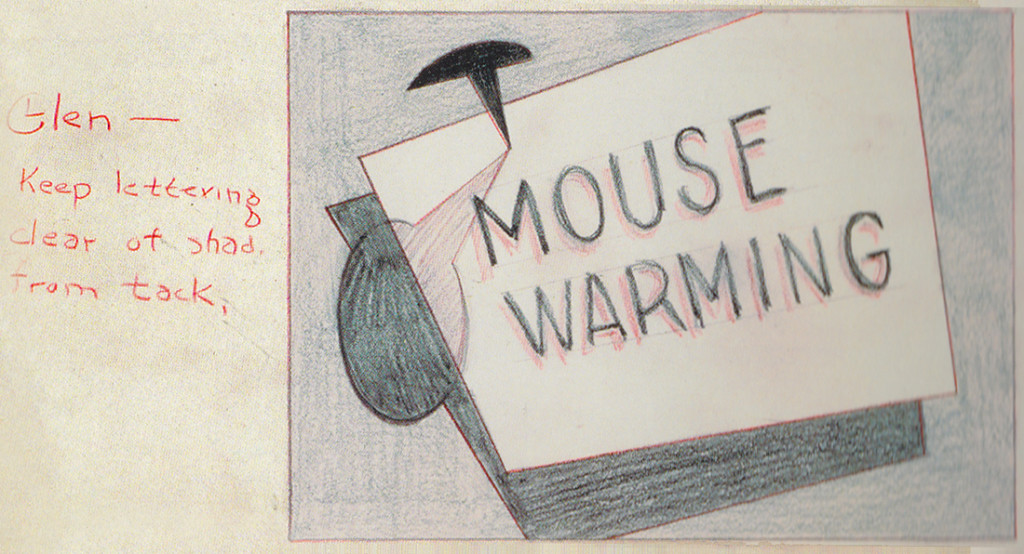
Maurice Noble probably first met Chuck Jones on the picket lines of the Disney strike. Noble was very sympathetic to the strike and was there throughout the anti-Disney action. Jones came from Warner Bros group as part of a support team that encouraged their brother workers onward. They felt obligated to support the strikers. This surely meant a lot to both – the creation of this new U-nion for the animation people and the protection of some of the helpless.
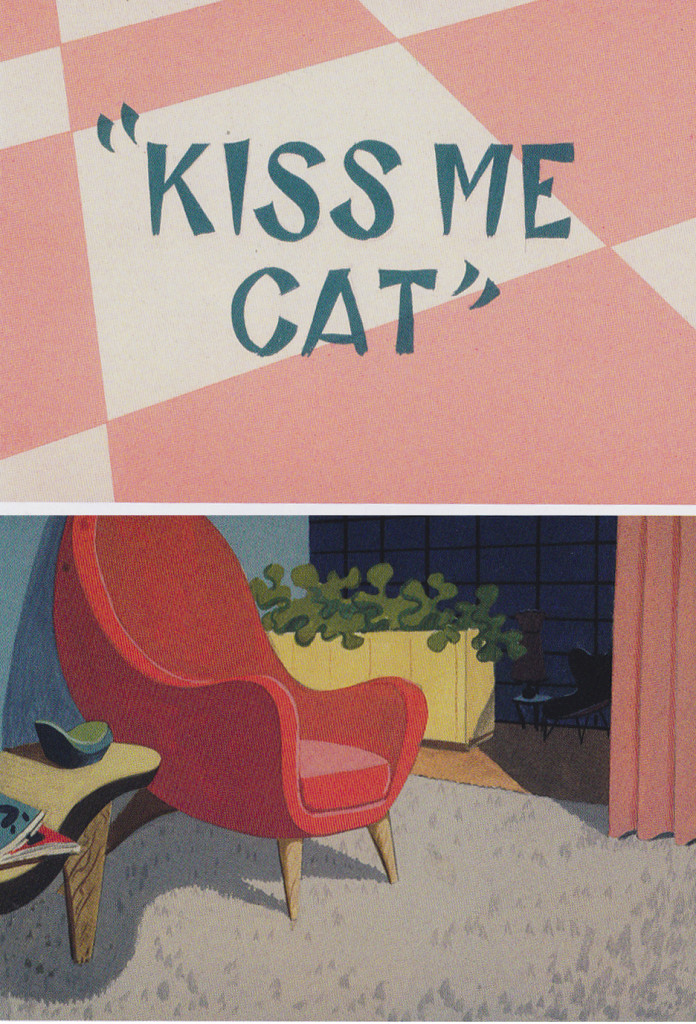 Certainly, Maurice and Chuck knew of each others from the product the did for the Army. They undoubtedly began working together during the War on the Snafu shorts. Jones directed some of them and Noble worked for the Signal Corps., so he’d have had a lot of participation in these films.
Certainly, Maurice and Chuck knew of each others from the product the did for the Army. They undoubtedly began working together during the War on the Snafu shorts. Jones directed some of them and Noble worked for the Signal Corps., so he’d have had a lot of participation in these films.
After the War, Noble ran into trouble and found himself without work when he went back to St. Louis leading a crew supervising filmstrips for Church-craft, an organization connected with the Lutheran Church. In 1951 he formally received an invitation to join the Jones unit.
Films done during this period include: The Unbearable Bear, done with John McGrew, Mouse Warming as well as Feed the Kitty both done in 1952. Maurice Noble brought a good advantage to the Jones unit. It reigned them in somewhat. Their design work was starting to dominate the WB films. Bernyce Fleury and Gene Pierce brought a wildness to the cartoons, and John McGrew, who’d established, this approach to the BG art was able to have a sidekick to pull the films together. This lasted until 1954 when Noble left Warner Bros for a stint at John Sutherland Productions. While at Warner’s his work was compared to UPA because of the raw flat art style he preferred.
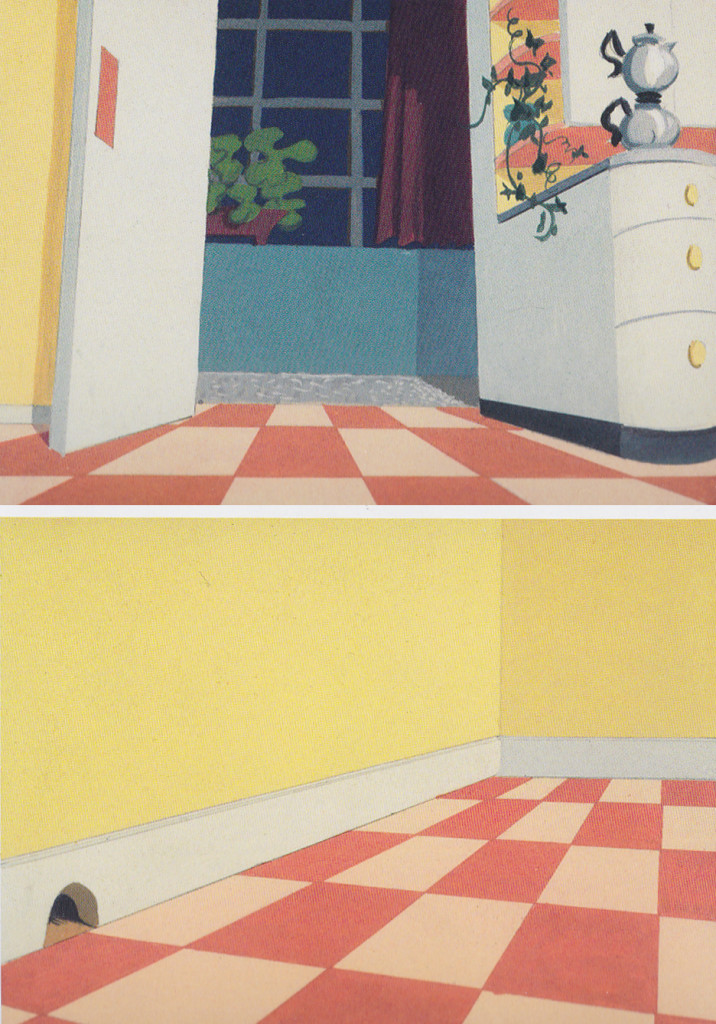 Noble liked to pare down the Backgrounds to only their essentials. All airbrush and unnecessary highlighting and shading was removed. This made the work distinctive from UPA in that it was an attempt to control the extraneous rather than just dumping it. He was out for changing the art; not just for the sake of the change but for the sake of the art, as well.
Noble liked to pare down the Backgrounds to only their essentials. All airbrush and unnecessary highlighting and shading was removed. This made the work distinctive from UPA in that it was an attempt to control the extraneous rather than just dumping it. He was out for changing the art; not just for the sake of the change but for the sake of the art, as well.
Jones’s group at Warners: Fleury, Pierce McGrew all had made a place in the Warner stable. Their art looked like no other unit’s; However, it wasn’t necessarily adding to the films as far as the management could see. Under the supervision of Leon Schlesinger it didn’t matter as long as the films continued to make money. Once Eddie Selzer took charge things began to change, and there was a close watch on all of the art as well as in the scripts ans stories. This is, perhaps, why Noble stayed on positve terms with Selzer whereas he Jones was not liked by Selzer.
Still,in all, because of the talent employed some of the best BG design and painting took place at the Warner’s studio; no one could deny that.
Daily post &Top Cel 29 Sep 2013 12:35 am
Who Saw That Coming?
Daily post 28 Sep 2013 07:07 am
Cloudy Daze
This past week was a quiet one around here.
I’ve been putting together a bid for an R. O. Blechman film. Ed Smith has animated some animation, and I’m counting the hours it’s taking me to render to completion. This will be part of the bid. Ed, these days, works rather straight ahead, but then will go wildly awry. Suddenly, there are duplicate numbers and it starts becoming a choice of judgement as to how to complete the scenes to best satisfy Ed. I’ve spent the past week just scanning the art from one of the scenes. I’d be 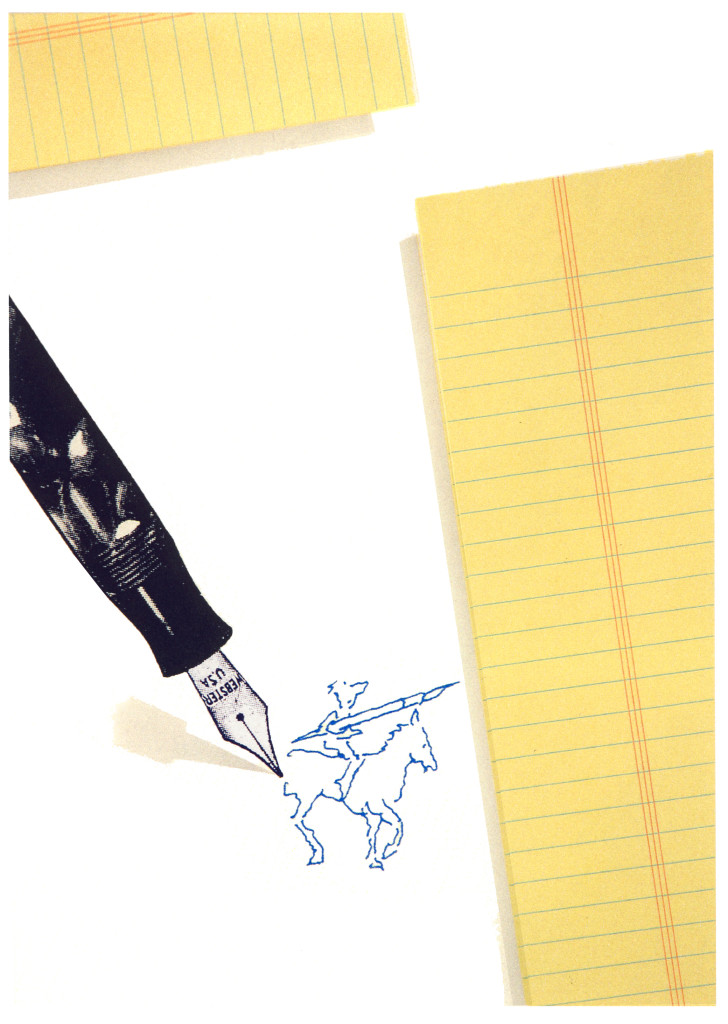 pleased that such a feature were in production if I didn’t believe it’d be coming to an end soon enough. I’ve done this often for Bob all to end in nothing.
pleased that such a feature were in production if I didn’t believe it’d be coming to an end soon enough. I’ve done this often for Bob all to end in nothing.
Speaking of Bob Blechman, he’ll have a major exhibition coming to SVA in NYC. The exhibition is on view October 2-November 2 at the SVA Chelsea Gallery (formerly the Visual Arts Gallery), 601 West 26thStreet, New York City. Admission is free and open to the public. He’d done a large part of storyboard (thumbnails, really) and is counting on Ed’s expert animation to sell it for him. I wish him luck
I still haven’t learned When The Wind Rises will play at the NY Film Festival, (as a mater fact it’s today, Saturday, at 12:30 but have heard that the tickets are about sold out.) No fear, the films open in theaters the day after the premieres, ususlly. (In the case of this film it’ll open Nov 8th in LA and NY for Oscar qualiying runs. I’ll see it soon.
Despite the negative review Bill Plympton left for it on his website, the many other reviews I’ve read have been positive.
Elliot Cowan, who was a judge at the recent Ottawa Festival, had this to say, “I’ve been at the Ottawa festival and have just caught up with your blog for the week. I’m not sure if you’ve seen Ernest and Celestine but it’s strange and lovely.”
“We saw a mostly very good film, a VERY beautiful, called The Boy and The World that I imagine you’d take to: We gave it a special mention.
It’s too long and undoes itself a bit by the end but it’s good stuff.
Mark Mayerson also was very positive about the Miyazaki film. I look forward to it and believe it’ll probably be perfect for me these days. It’s something worth looking forward to see. (Sorry but Cloudy with a Chance of Meatballs 2, isn’t going to be the answer. I’m pleased Ron Barrett is gaining some success, though.
Thanks ROC for correcting the name for me.
Books &Commentary &Layout & Design 27 Sep 2013 06:33 am
More Sketchbook Work
I’d like to continue here with more of the Animation Sketchbook drawings that appear in that beautiful Chronicle book, “Animation Sketchbooks.” I will just jump in with more illustrations done by these world-wide animators.illustrators.
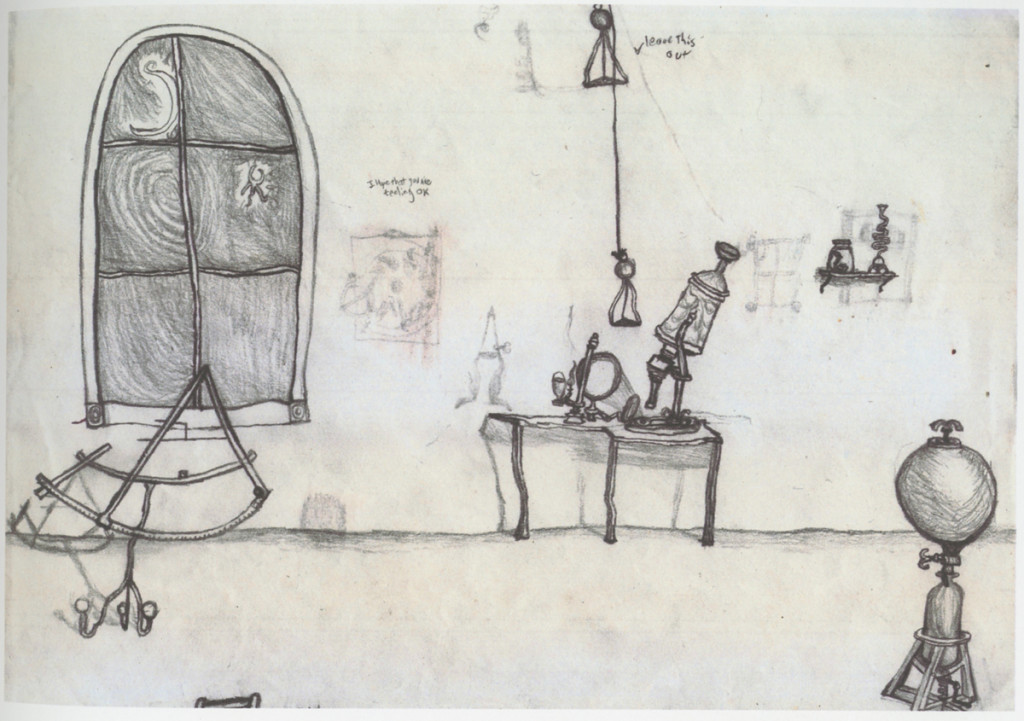
Brent Green Stybd for Chesternut
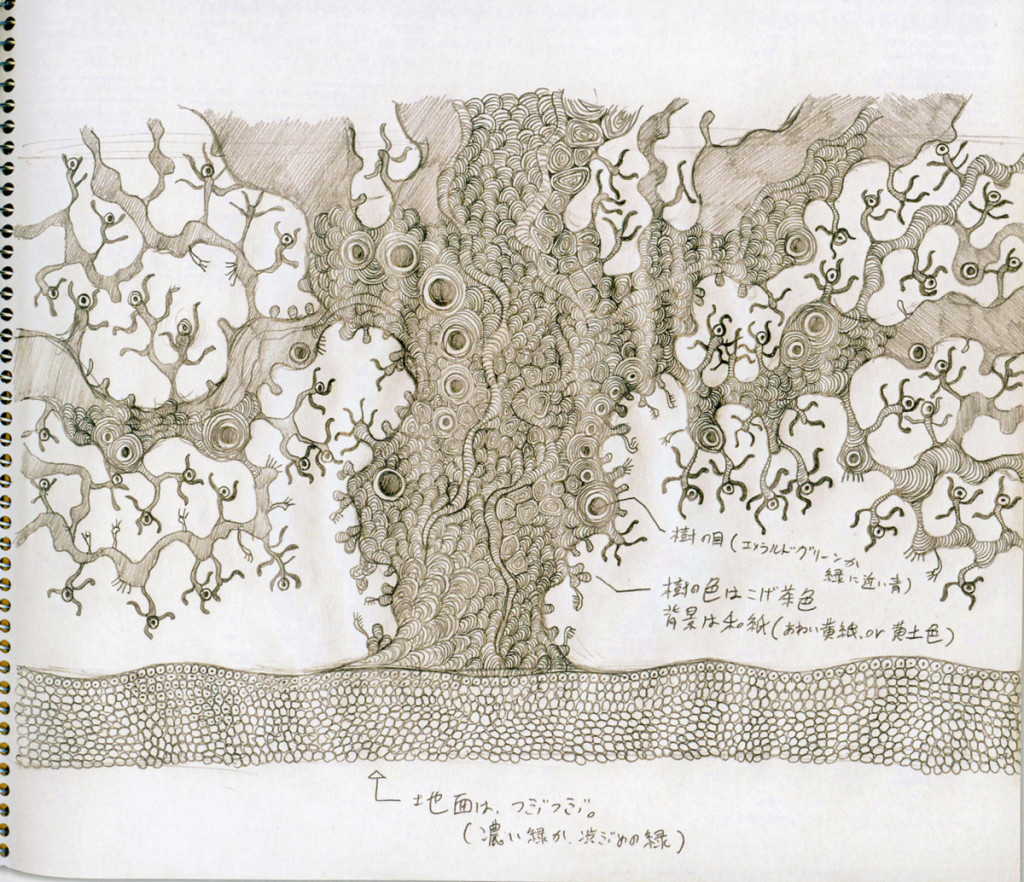
Miraj Majui Sketch for children’s TV WOWW.
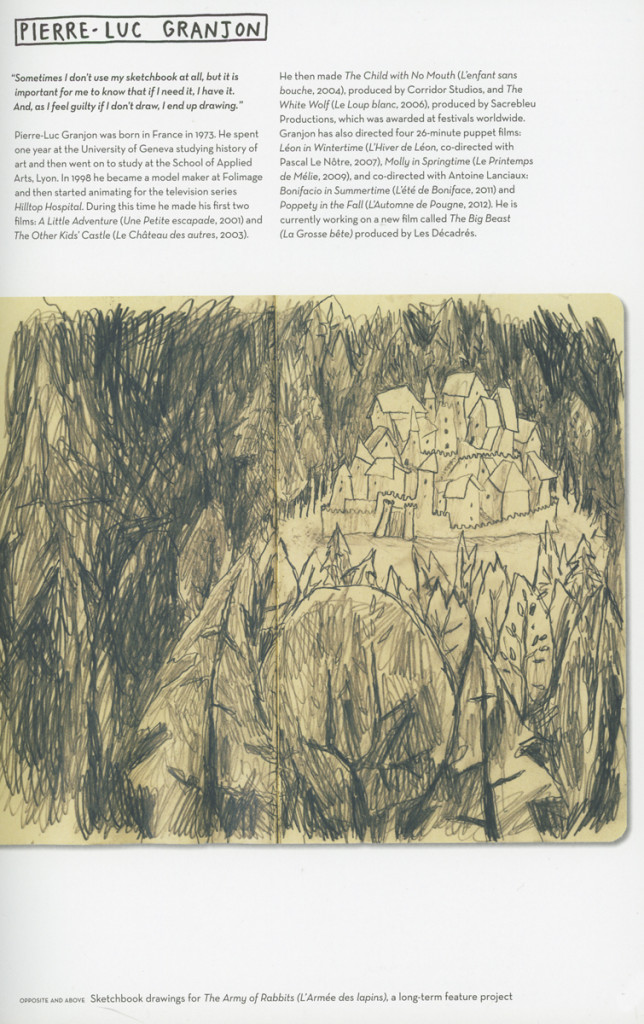
Pierre-Luv Granjon sketchbook dwng 2
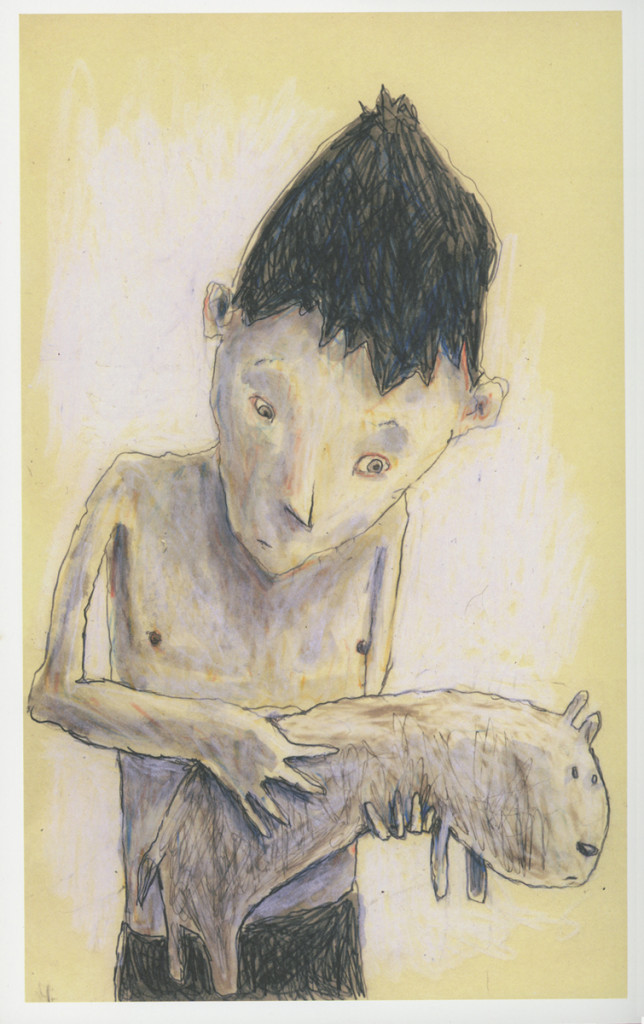
Pierre-Luv Granjon sketchbook dwng.
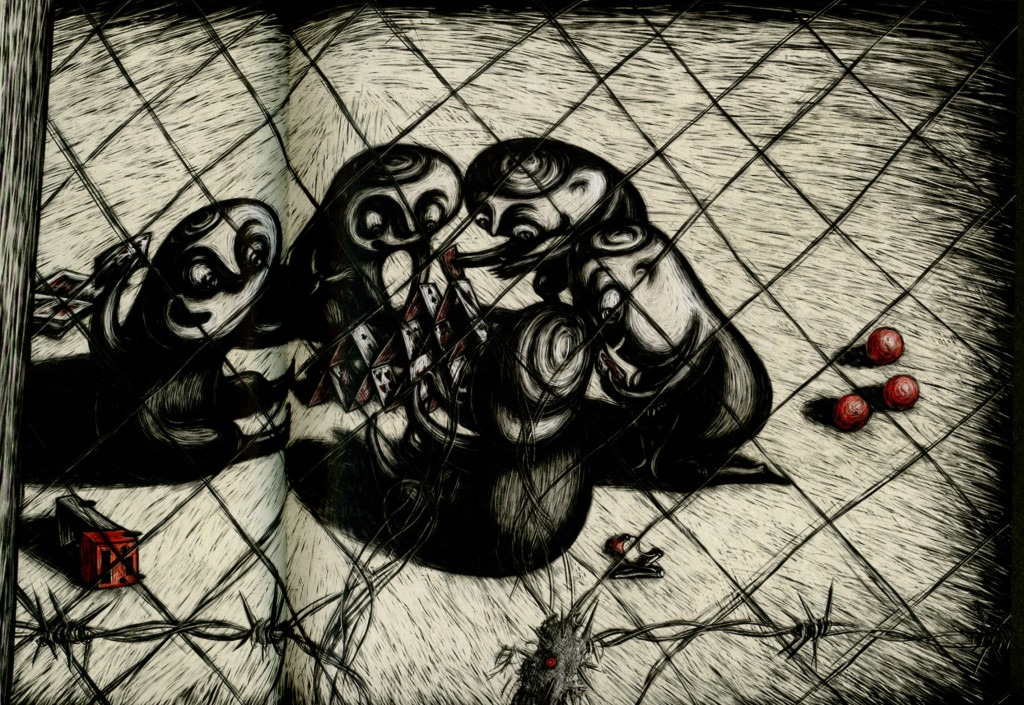
Regina Pessoa Kali the Little Vampire
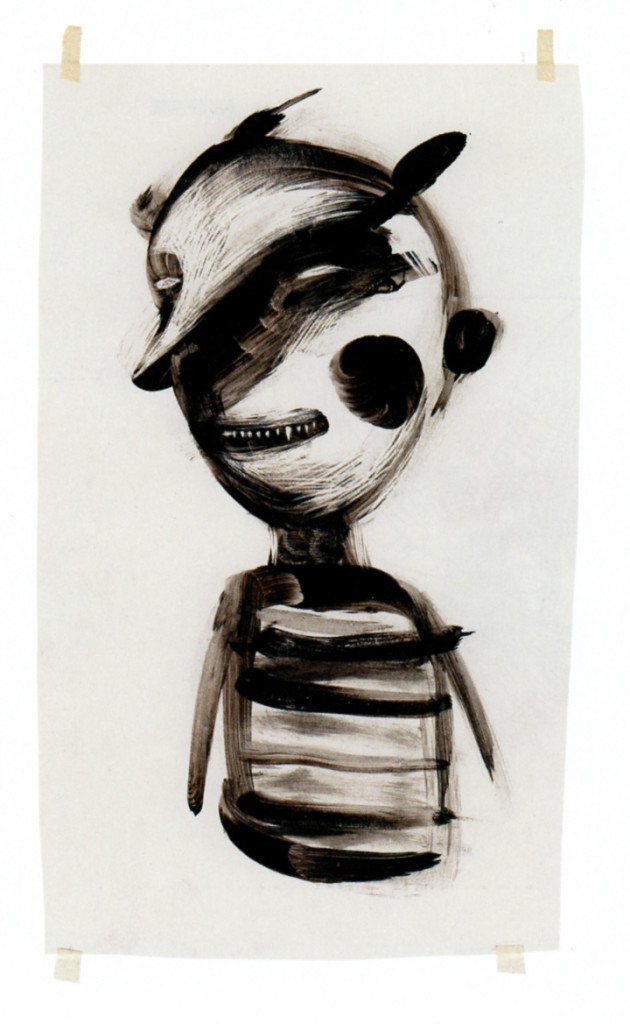
Regina Pessoa sketch Kali, little vampire
Books &Chuck Jones &Commentary &Illustration &Layout & Design &Models 26 Sep 2013 08:22 am
Rhapsody in Working for Suherland
Maurice Nobel worked several years at Warner Bros. under Chuck Jones for the most part, but in 1950 he moved to John Sutherland Productions where he worked on lesser known projects. He had a money war with Eddie Seltzer at WB and accepted the higher price from Sutherland with Selzer telling him that the door would remain open.
WB tried to turn everything to 3D and gave up after one cartoon, Lumberjack Bunny. It’s obvious that some of Maurice’s LOs were prepared for 3D and were switched at the last minute. WB was closed for a year when it was decided to stop production on the 3D films. Noble had taken the right course in working for Sutherland for the few years he was there.
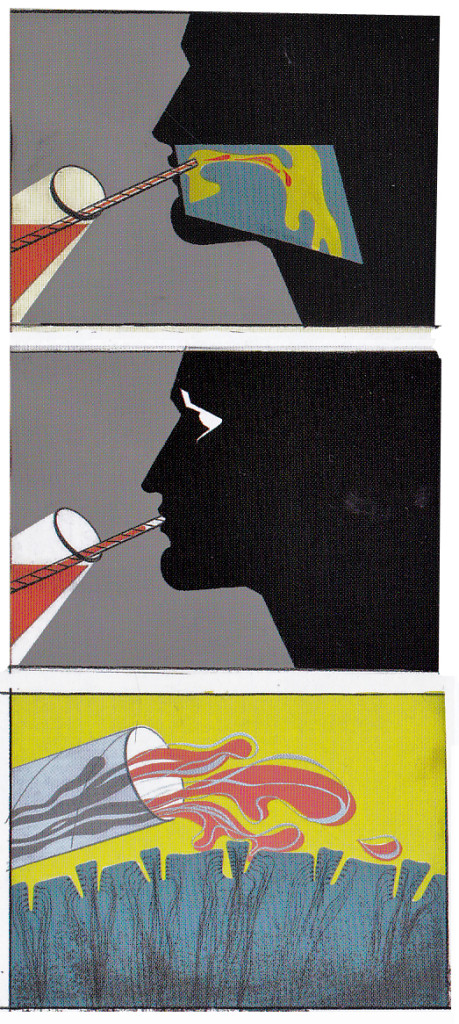
Color keys to the John Sutherland Prod
Gateways to the Mind
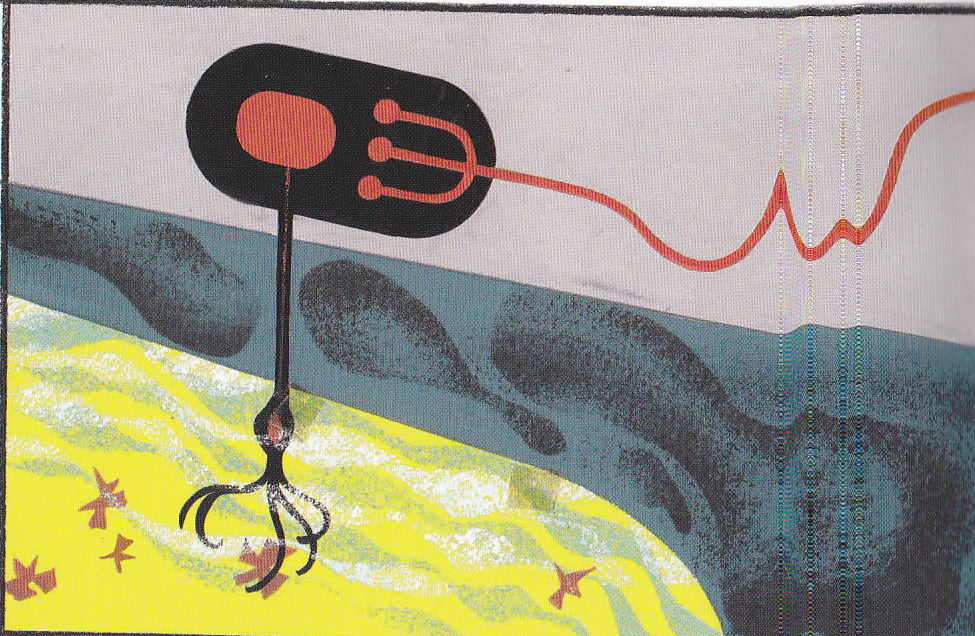
Rhapsody in Steel (below) was a high budget film for Sutherland with Eyvind Earle hired as Art Director. Ultimately he just painted the BGs that were designed by Maurice Noble. This beautiful film can be seen on YouTube, here.
Illustration 25 Sep 2013 05:58 am
Steadman’s Alice in Extremis
Here we have some real choice illustrations by Ralph Steadman. Some of these images seem more an illustration of something Edgar Allan Poe might have done than delicate portals to Lewis Carroll’s world. Yet Swteadman has captured the underbelly of the beast of that afterrnoon tale Dodgson created onn-the-spot for Alicie Liddell. But let’s not split hairs; let’s just enjoy the artwork. These pieces take us about half way through the book. Lots of work all great. Only John Tenniel had done better work, and his was the first voice we got to hear.
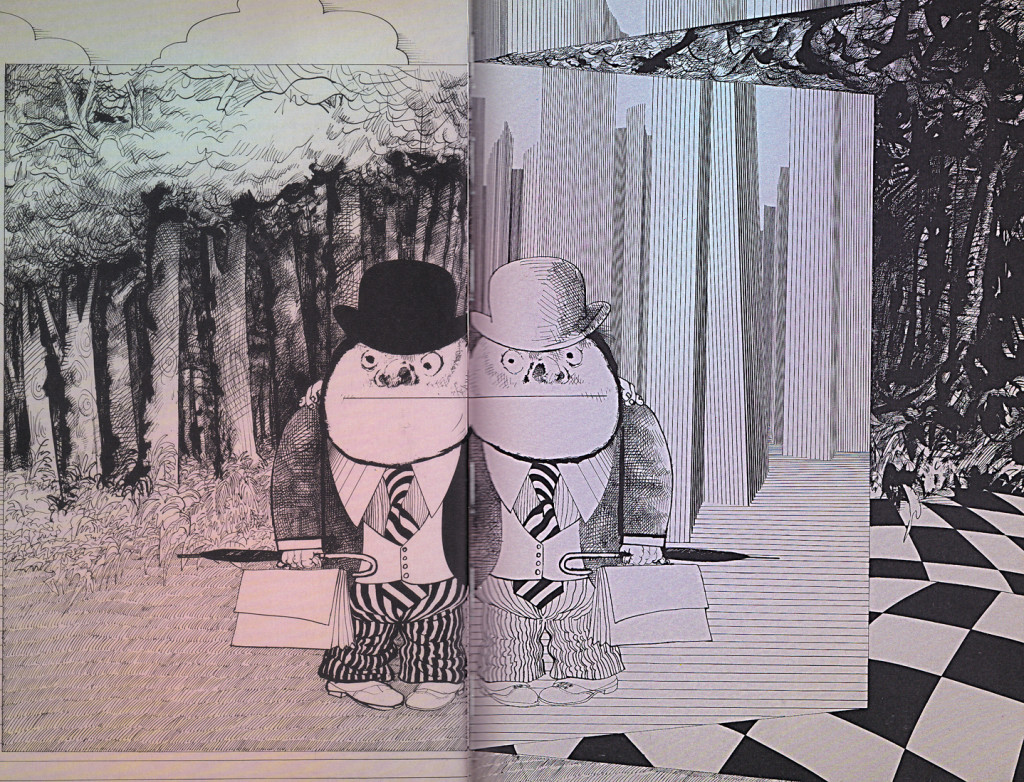 1
1
Books &Commentary &Independent Animation 24 Sep 2013 08:14 am
I love the early Warner cartoons. I’m particularly fond of the late thirties and early forties when they were finding their design style, and. in fact, were probably being the most daring in the US with their graphic choices. John McGrew along with the husband and wife team of Gene Fleury and Bernyce Polifka were doing magnificent and, even, daring work. When Maurice Noble entered the scene his was the final wrench to tighten the bolts.
It’s for this reason that I am spending so much time on the opening section of Tod Polson‘s book, The Noble Approach from Chronicle books. Here are some magnificent images from that section of the book. You should go to YouTube and look at A Few Quick Facts About Fear. It’s a magnificent work that was done for the Signal Corps (although it was done by UPA in its very earliest days.)
Desert Designs by Noble
John McGrew’s BG designs for The Unbearable Bear
Animation Artifacts &Articles on Animation &Books &Commentary 23 Sep 2013 08:00 am
Heading Toward WB
Maurice Noble began his art career at Chouinard’s Art Institute. He and Mary Robinson (Blair) followed similar paths at the school. They both moved on to jobs decorating windows of Robinson’s Department Store. Their design styles were in no way similar, but their approaches to the art were. This was during the Great Depression, and there was no chance of getting a raise of salary there to match what ould be earned at Disney, They both moved on to working at Disney’s Studio.
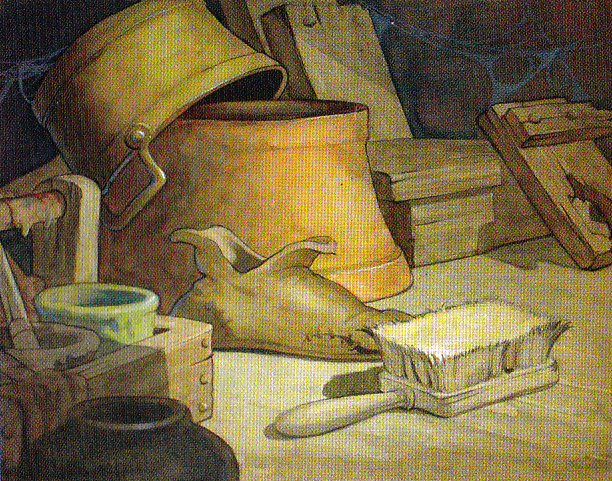 His first assignments were in painting backgrounds for some Silly Symphony cartoons such as Elmer Elephant, Water Babies, The Old Mill and The Country Cousin. All of these were “A” list Symphonies and were certainly plumb assignments within the studio, yet it took Maurice a short bit of time to appreciate the move he’d made toward animation. He soon found himself painting backgrounds on Snow White and designing on Bambi, Pinocchio, Fantasia and Dumbo. On Dumbo he helped to design the Pink Elephants sequence. He developed his personal approach to animation design.
His first assignments were in painting backgrounds for some Silly Symphony cartoons such as Elmer Elephant, Water Babies, The Old Mill and The Country Cousin. All of these were “A” list Symphonies and were certainly plumb assignments within the studio, yet it took Maurice a short bit of time to appreciate the move he’d made toward animation. He soon found himself painting backgrounds on Snow White and designing on Bambi, Pinocchio, Fantasia and Dumbo. On Dumbo he helped to design the Pink Elephants sequence. He developed his personal approach to animation design.
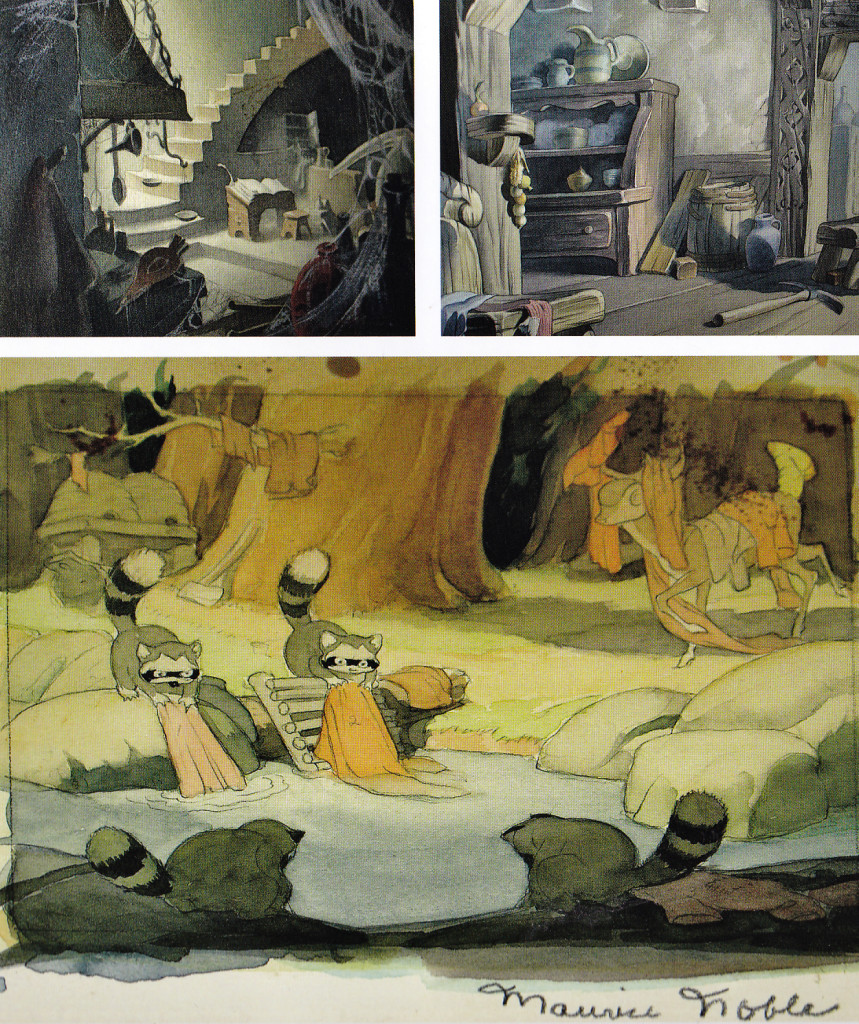
Selected art by Noble from Snow White
There was also a legendary screening, set up by Frank Lloyd Wright, attended by many at the Disney design group, of a Russian animated film called The Tale of Czar Durandai. This 1934 short film was directed by the famous Ivan Vanov-Vano. John Hubley also used thisfilm as an example of inspirational work for the animation he was to do.
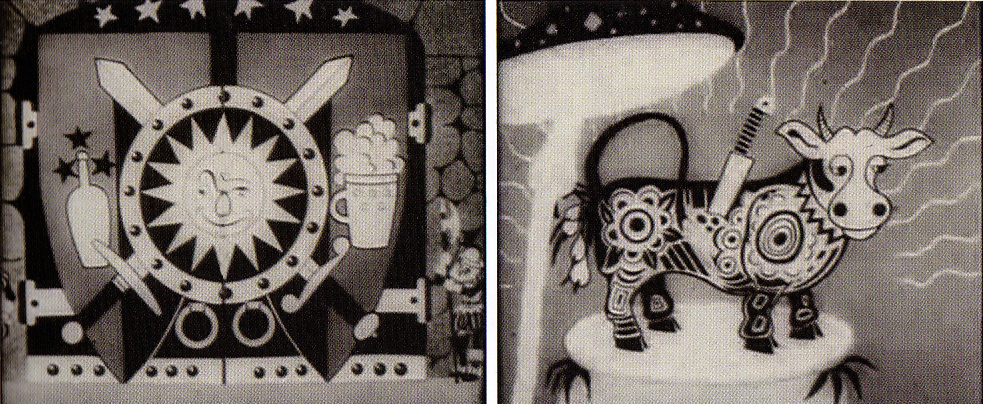
The Tale of Czar Durandel
Maurice Noble had also participated in the strike at Disney’s. When it was over, he was given a second-rate office, and it was obvious he was no longer in high demand at the Studio. He sat doing nothing for quite some time before receiving severance pay. He then joined the Signal Corps to work for the Army. The aggregation of artists who had joined the group was a top-notch selection of excellent designers all of whom were committed to 20th Century Art in animation. Animation had joined the Modernist movement, and was on its way to producing “adult” fare.
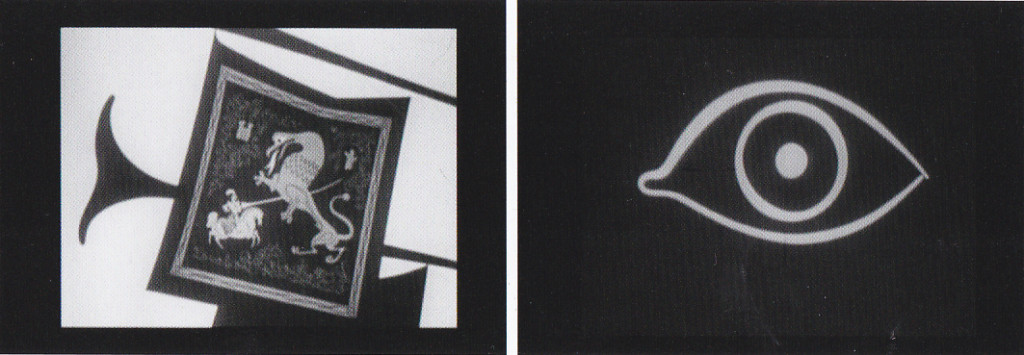
A Few Quick Facts About Fear was a short produced/directed by Zach Schwartz
which took complete use of the new approach to artwork in animation.
Noble worked with Zach Schwartz on a film which led the way to the new approach to animation art. The film was done purposefully in B&W using a bold approach to the art.
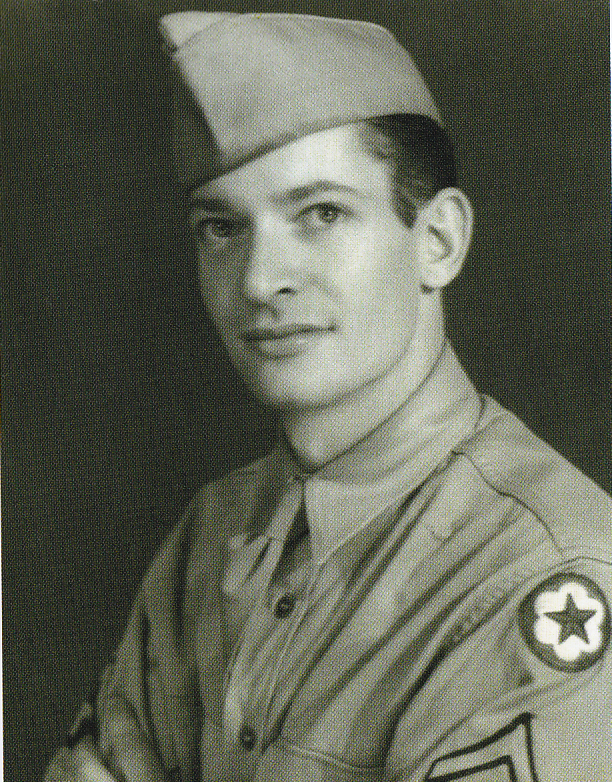
Maurice Noble in the SignalCorps.






